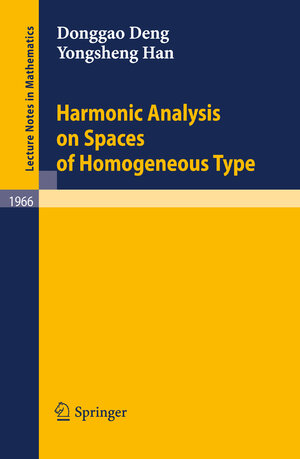
×
![Buchcover ISBN 9783540887454]()
From the reviews:„The book reflects recent trends in modern harmonic analysis on spaces of homogeneous type. … is worth being read by every analyst.“ (Boris Rubin, Zentralblatt MATH, Vol. 1158, 2009)“The book under review deals with real variable theory on spaces of homogeneous type. … The book does a good job of describing this theory in detail along with the recent results in this exciting area of harmonic analysis.” (E. K. Narayanan, Mathematical Reviews, Issue 2010 i)
This book could have been entitled “Analysis and Geometry.” The authors are addressing the following issue: Is it possible to perform some harmonic analysis on a set? Harmonic analysis on groups has a long tradition. Here we are given a metric set X with a (positive) Borel measure ? and we would like to construct some algorithms which in the classical setting rely on the Fourier transformation. Needless to say, the Fourier transformation does not exist on an arbitrary metric set. This endeavor is not a revolution. It is a continuation of a line of research whichwasinitiated, acenturyago, withtwofundamentalpapersthatIwould like to discuss brie? y. The ? rst paper is the doctoral dissertation of Alfred Haar, which was submitted at to University of Gottingen ¨ in July 1907. At that time it was known that the Fourier series expansion of a continuous function may diverge at a given point. Haar wanted to know if this phenomenon happens for every 2 orthonormal basis of L [0,1]. He answered this question by constructing an orthonormal basis (today known as the Haar basis) with the property that the expansion (in this basis) of any continuous function uniformly converges to that function.



